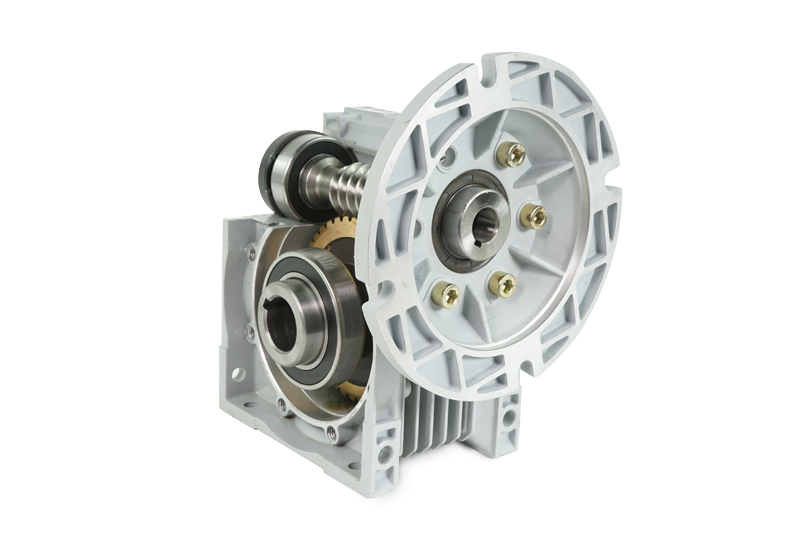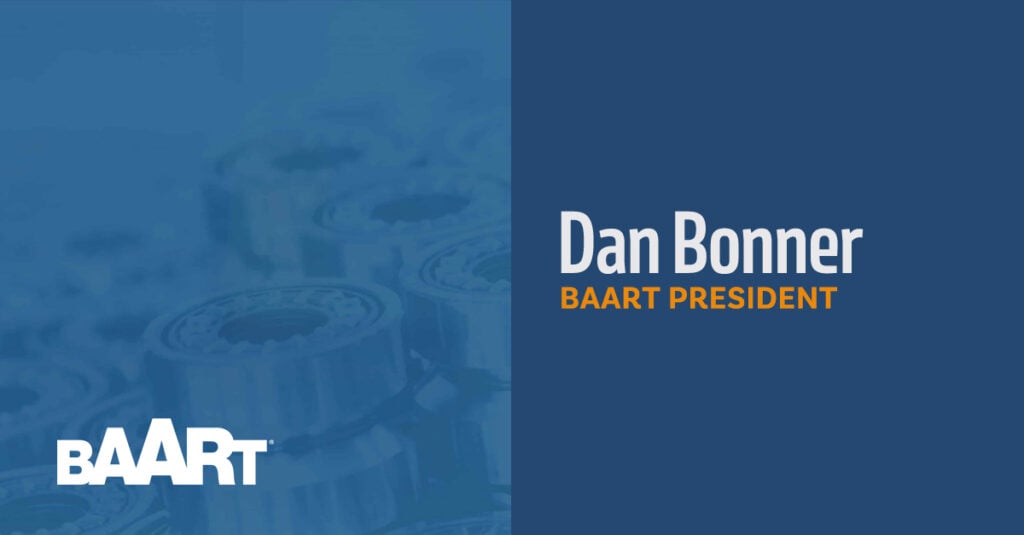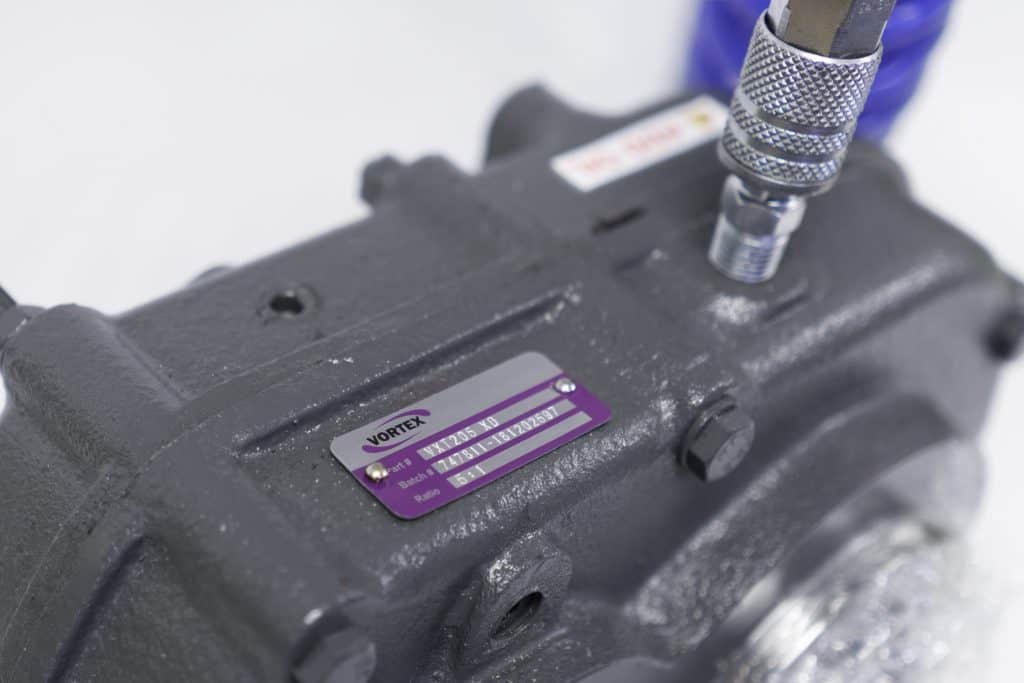Gearbox Noise & Vibration: Shaft Mount Reducer Solutions

Are you noticing gearbox noise and vibration in your reduction drive? This is a sign of an issue that should be fixed sooner rather than later. Break down in your helical shaft mount speed reducer can cause a shutdown of your entire machine. Any delay in production is costly and unpleasant. Definitely something worth avoiding.
Your shaft mount speed reducer is the sum of many interconnected parts. When everything is running smoothly, we tend to think of it as a single unit. However, when it breaks down, there are a number of parts that can be the problem. It’s important to remember that gearbox noise and vibration could be caused by a variety of components or even a group of several.
It’s a lot to sort out, but with some troubleshooting, we can narrow it down.
Improper attachment
Shaft mount reducers are completely supported by the shaft that they mount on. Without a torque arm installed, the resultant forces from the prime mover would cause the reducer to spin on said shaft. Not unlike a mounting flange for a C-face gear reducer, the torque arm allows forces to pass from the driver into the mounted shaft.
When a torque arm is improperly installed, transmitted torque will no longer be entirely directed to the driven shaft, leaving the remaining forces to create vibrations within the drive. Confirming that the torque arm is 90° from the centerline of the input and output shafts and that all fasteners have been properly tightened is essential.

Improper oil levels
Lubrication, lubrication, lubrication. A drive system is full of moving parts. Without proper lubrication, increased friction will allow wear to develop faster, which will naturally lead to vibration and noise. These are the least of your problems, however, because a poorly lubricated system can develop multiple issues resulting in destroyed parts and lost productivity.
Proper lubrication is key to keeping any mechanical system in good working order. In a gear reducer, oil minimizes friction between surfaces and transfers heat away from the contact area. On top of that, it also keeps your bearings and seals in good working order. When the oil level is low, unnecessary wear and tear cause premature wear of gears and bearings. Those worn-out parts create the gearbox noise and vibration you find difficult to ignore.
If you suspect your oil level may be low, it’s worth checking your application guide. There are six available mounting positions and several levels of rotational and incline tilts. Each variant will need a different amount of oil – anywhere from 0.65L to 25L.

Premature gear wear
Along the same lines, premature gear or bearing wear can cause unintended movement, vibration, and gearbox noise. Gearing designs allow gears to operate with a set amount of clearance or backlash between gear sets. Bearing designs allow operation with a set amount of internal clearance or endplay. Excessive wear will increase these clearances and will cause your gears and bearings to move erratically. The teeth may engage at unintended, odd angles – creating unknowable forces that vibrate parts within your system.
There are several reasons why premature gear wear can happen. As you may have expected, one of the most common is improper lubrication. If the oil is too thin, it won’t provide the protection your gears need, and the resulting friction will wear them down prematurely.
Other issues will arise if your drive can’t handle the mechanical or thermal forces you expose it to during operation. Each reducer is rated to mechanically or thermally handle a set amount of input horsepower. Exceeding these ratings will lead to premature wear. The only question is how long it will take for the wear to develop into a catastrophic failure.
If conditions in your location are more extreme than average – with higher temperatures, higher altitude, or other complications – you must factor those variants into the guidelines. Putting too much mechanical or thermal pressure on your reducer may cause very rapid premature wear. Reselecting a unit with the proper service factor will avoid this scenario.
It is challenging to know the exact cause of gear or bearing damage, especially while the gearbox is still assembled. Once you’ve checked lubrication levels and made sure the proper service factor is being used, the final step is replacement. New gears and bearings, followed by careful reassembly and installation, should resolve any issues.
Undersized or bent shaft
When troubleshooting issues such as vibration, the shaft matters. If the driven shaft is not within tolerance, the reducer’s twin tapered bushings won’t be able to grip it tightly. Any amount of off-balance rotation and wobbling within the bushings will cause vibrations in your helical shaft mount reducer.
If you feel the shaft is the correct size, but there appears to be rotation or wobbling, check the tightness of the bushings. Fully tightened tapered bushings on a correctly sized shaft should eliminate the issues, as long as the torque arm is also aligned.
Similarly, the driven shaft must extend through the full length of the helical mount shaft reducer. If the shaft is not fully supported, the transmitted load won’t be uniform. When that happens, excessive loading on one side of the reducer will increase pressure on the gears beyond what they were designed to withstand. These imbalanced, high loads will wear down your gears – causing the noise and vibration we talked about in the gear section. In these situations, you’ll need to reposition the reducer on the driven shaft and replace the worn gears.
The final shaft consideration is runout. A bent shaft – however slight – will cause imbalance during rotation. This eccentric rotation will cause vibration. More importantly, it can hasten the wear of every part of your helical mount shaft speed reducer’s internal structure. Checking the size and runout of the driven shaft before installation is critical. No one wants to replace a reducer due to preventable wear.
Worn or cracked v-belts
Most shaft mount reducers are driven by an electric motor and a V-belt drive. For these drives, the connection between the prime mover and the reducer must be as accurate as possible. Over time, as your V-belts become worn, additional forces will occur in the system. These forces will cause imbalances in the system, and thus gearbox noise and vibration. Any issues at the beginning of the drive can cause problems through the entire system, so replacing worn belts is of critical importance.
Overhung load
When applying too much radial load, too far away from the support bearing, you have a condition known as overhung load. This leads to excessive bearing loads as well as a potential for broken input and output shafts.

Overhung load will rapidly wear bearings and cause vibrations as a shaft is bending or breaking. It is critical to mount sheave and sprockets as close to the body of the reducer as possible to limit these effects.
Improper connections
Driven equipment noise is a potential cause that can be more difficult to troubleshoot than others because it involves adjacent systems. A properly functioning drive is symbiotic, with each part relying on those around it to function properly. A fault in another system, for instance, a conveyor, can travel down the line.
Any external component that isn’t working properly can transmit its problem to your reducer. For instance, if belt drive tension or alignment is incorrect, all motion past that drive will be affected. The same goes for couplings or any component with fasteners or set screws.
If anything is out of alignment or not fully locked onto the shafting, those vibrations can be amplified by your shaft mount reducer. If you’ve thoroughly examined your drive system and haven’t found any issues, cast a critical glance at the parts connected to it.
Questions about dealing with drive wear or solving unexpected problems in your drive? Explore more of our Knowledge Base for information and advice.
Sort by category: Case Studies & Solutions
Sort by topic: Shaft Mount Reducer, Speed Reducer, Vortex




